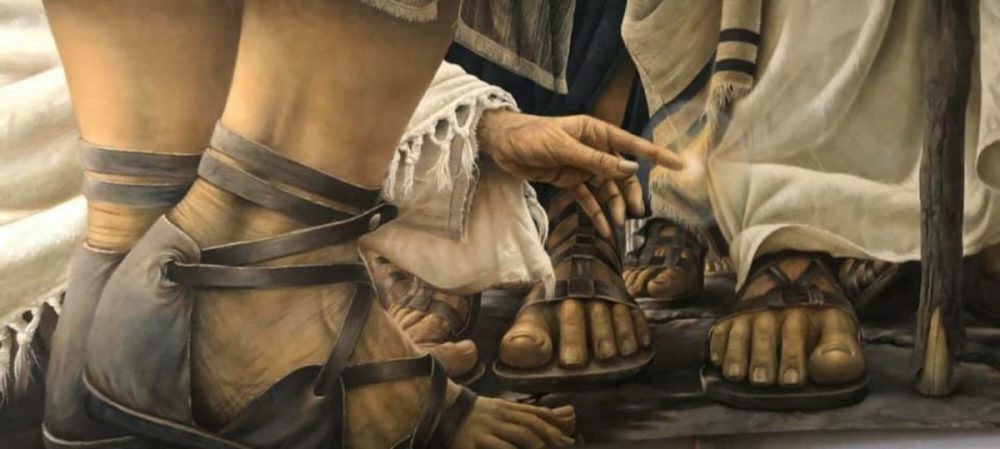The picture at the top of the page is one I took on our trip to Israel. It is a large painting that decorates a wall in the lower chapel of a church near Magdala. Of course, it portrays the story of the woman who touched the hem of Jesus’ garment and was instantly healed after hemorrhaging for twelve years (Matt. 9:19-21; Mark 5:24-34; Luke 8:40-48).
On the surface, it appears as a simple story of a woman who reached out in faith to touch Jesus’ garment and was healed. However, there is much more to it when one understands the part of the garment she touched. She didn’t just touch any part of the garment, but the passages in the various gospels specifically point out that she touched the edge, hem, or fringe of his garments. To understand the significance of this, we must go back to the Old Testament.
According to Numbers 15:37-41, the men of Israel were required to put tassels on the corners of their garments. These tassels represented the commandments of God and they were to be visible to remind them to obey all the commandments and be holy. Today we still see Orthodox Jewish men wearing a garment that has tassels that can be seen under their coats, and the Jewish prayer shawls give us a picture of the tassels adorning the edge of a garment. You can also note in the picture that the woman is reaching her finger directly toward the tassels hanging on one of the garments Jesus is wearing.
Another interesting fact is that the Hebrew word for corner in Numbers 15:38 is kanaph which also means edge or wing. It is the same word used in Malachi 4:2, “But for you who fear my name, the sun of righteousness shall rise with healing in its wings”. The early church fathers and commentators understood the sun of righteousness to be a reference to Christ, the Messiah. Is it also possible, then, that this woman, who had been suffering these twelve years, knew these passages and understood them to mean that when the Messiah comes, He will come with healing in His wings—corners, edges of His garments?
One could surmise, then, that maybe she felt that if she could reach out and touch the tassels (lay hold of God’s Word), that she could receive the promised healing (Mark 5:28). And she is not the only one who held such beliefs. In Matthew 14:34-36 we read that when Jesus and the disciples crossed the Sea of Galilee the people of Gennesaret brought all the sick from the area to Jesus begging Him to let them touch the hem of His garment.
One more point to make about the woman is that, since she had been hemorrhaging, she was considered unclean according to Jewish law. Therefore, she should have been isolated and not allowed in public gatherings, especially not in a crowd this large. She was taking a large risk pushing her way through the crowd for everyone she touched would also have been made unclean by her. Yet, she was desperate and determined to not let anything, or anyone, keep her from receiving her healing.
Too often, when we pray, we give up before we receive an answer. For whatever reason, we allow distractions, discouragement, or disappointment to keep us from “pressing through” until an answer comes. Yet, here was a woman who put her trust in who Jesus was (the Messiah) and, with dogged determination, pushed through all obstacles to take hold of God’s Word (tassels) to receive His promise (healing in his wings). It was this faith (and determination) that Jesus said brought her healing (Luke 8:48).
Whatever you are facing today, I would encourage you to follow the example of the women in this story. Recognize who Jesus is and put your complete trust in Him, grab hold of God’s Word for your situation, and persistently and continuously press in with prayer, not allowing anything to hinder you, until you receive an answer. Push through the crowd and touch the tassels on the corner of His garment!
